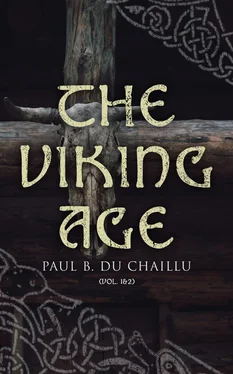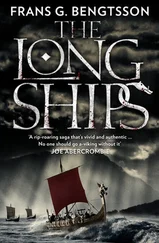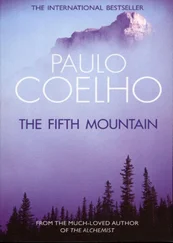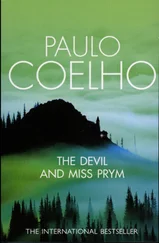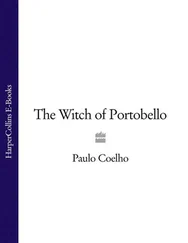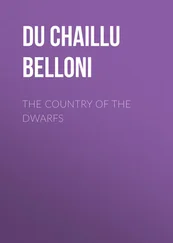CHAPTER XX.
RELIGION.—WORSHIP, SACRIFICES, ETC.
Table of Contents
Odin’s religion—Sun worship—The Three Annual Sacrifices—The Atonement Boar and Bragi Toast—The Victory Sacrifice—Temple Priests—Animals for Sacrifices—Sacrificial ceremonies—Divination—Chips—Drawing of lots—Consecration of land and property—Worship of Thor—Sign of the Hammer—The Svastica—Story of Framar.
The earlier Edda or Sagas which relate to us the traditions about Odin and the Asar do not give any description of the sacred ceremonies or rites they performed.
From the Ynglinga Saga we learn that the hero Odin of the North sacrificed after the manner of the Asar, and that the sacrifices made by him, Njörd, Frey, and Freyja, were to a power worshipped by them, but we are not told who the god or power was. It probably was in some instances the sun, represented perhaps by the eye of the earlier and mythical Odin of the Völuspa—who, as we have seen, pledged his eye for a drink from the well of Urd; we know that the worship of the sun was widely spread at one period in the history of the world. 217How the change from the worship of this unknown power to the worship of Odin and the other gods took place we are not told; but it may, we think, be taken for granted that many of the ceremonies and beliefs mentioned in the Sagas were of very ancient origin.
It is only by a study of all the Sagas that we gain a knowledge of the beliefs, religious ceremonies, mode of worship and superstitions of the people of the North, which are often minutely described. It is somewhat difficult for the present generation of English people, living in Great Britain and other countries, to realise that no more than eight centuries ago many of their forefathers believed and practised the rites we are going to describe, and that so slow was the march of Christianity, that six or seven hundred years ago the provinces of North-Eastern Prussia, Vindland, Pomerania, &c., whose inhabitants are among the finest in Europe, were still heathen.
It is certain that Odin and some of the Asars were deified and worshipped in all the countries of the North, and with the lapse of time their fame is found to increase. The attributes of Odin were believed to be many.
There were three principal sacrifices a year, at which the people assembled in the chief temples:— Vetrarblót , Midsvetrarblót , and Sigrblót .
“It is their custom to have a sacrifice in the autumn and welcome the winter, another at mid-winter, the third at the beginning of summer; then they welcome the summer. The Eynir , Sparbyggjar , Verdælir and Skeynir take part in this. There are twelve men 218who are the foremost in managing the sacrifice-feasts: this spring Ölvir is to hold the feast; he is now very busy in Mæri, and all provisions needed for the feast are brought thither.” (St. Olaf, 115; cf. id. 123).
The first of these, called Vetrarblót 219(Winter sacrifice), which took place on winter nights 220in the month of Gói, was a sacrifice for a good winter. The 14th of October, which was the ancient month of Gói, is still called winter-night, or the first night of winter.
“That autumn the news was told King Olaf from Thrándheim that the Thrands had had great feasts during the winter nights: there had been great drinking. The King was told that all cups were hallowed to the Asar according to ancient custom. It was also said that cattle and horses were slaughtered there, the altars reddened with blood, and sacrifices made for the bettering of the year. Also it was said that they all thought it evident that the gods were angry because the men of Hálogaland had become Christians” (St. Olaf, 113. Heimskringla).
The second Midsvetrarblót (Mid-winter sacrifice), also called Jólablót 221(Yule sacrifice), was held at mid-winter, or in the beginning of the month of Thór (middle of January), to ensure a good year and peace, and lasted three days; at this feast it was customary to make vows to some of the gods, especially Frey, at Yule-eve. It seems to have been the greatest and most important of all, and many animals were slaughtered at it. 222The 12th of January is still called mid-winter in Norway. 223This sacrifice plainly shows that the blessings of peace were appreciated by this warlike race. The Swedes, as we have read, wept over the death of Njörd, for during his time there were good years and peace.
“King Fornjót ruled Jötland (Jötunland) which is called Finnland and Kvenland, that is east of the arm of the sea which goes on the opposite side of Gandvik and which we call Helsingjabotn (Bothnian Gulf). Fornjót had three sons: Hler, whom we call Ægir, Logi, and Kári, who was father of Frosti, the father of Gnár the old; his son was Thorri, who had two sons, Nor and Gor; his daughter was Gói. Thorri was a great sacrificer; he had a great sacrifice every year at mid-winter which was called Thorra blót; from this the month was named (Thorri). One winter Gói disappeared at the Thorri sacrifice; she was searched for and not found. When the month had passed Thorri had a sacrifice in order to find out where Gói was; this they called Góiblót , but they learnt nothing about her” (Fornaldar Sögur ii., p. 17).
On the Yule-eve it was the custom to lead in procession a boar, consecrated to Frey, called Sónar golt (atonement-boar), and on this those present placed their hands, made solemn vows, and drank the Bragi toast.
“King Heidrek had a boar fed; it was as large as the largest bull, but so fine that it seemed as if every hair on it was of gold. He placed one hand on its head and one on its bristles, and made a vow that never should a man transgress so much that he should not have the lawful judgment of his wise men, and these men should take care of the boar, or else he should come with riddles which the king could not guess” (Hervarar Saga, c. 14).
In the evening vows were made, and the atonement-boar ( sónar golt ) was led forward; the men laid their hands on it, and made vows at the Bragi toast (Helga Kvida Hjörvardssonar). 224
“In the winter the foster-brothers (Ingólf and Leif) made a feast for the sons of the Jarl (Herstein, Hástein and Hólmstein, the sons of Atli-jarl). At this feast Hólmstein made a vow that he would marry Helga, the daughter of Örn, or no other woman. Men disliked this vow, but Leif was seen to become red (in his face), and he and Hólmstein were no friends when they parted at the feast” (Landnáma i., c. 3.)
“Thórodd was with another man at Thórar’s. There was a great Yule-feast, the ale being provided by each one himself. There were many besides in the hamlet, who all drank together during Yule. A short way off there was another hamlet. There the brother-in-law of Thórar, a powerful and wealthy man, lived; he had a grown-up son. They were to drink during the half of the Yule at each other’s farm, and first at Thórar’s” (St. Olaf, c. 151).
“One winter at Yuletide, when the people were assembled to drink, Finn said: ‘Vows will be made in many places this evening, where it is not better to be than here; now I vow that I will serve the king who is the highest and in all things surpasses others’ ” (Fornmanna Sögur ii., ch. 201).
The third, called Sigrblót (Victory sacrifice), for luck and victory, occurred in the beginning of spring, about the middle of April, being fixed at that time of the year because warfare and most Viking expeditions took place in the summer. It was in honour of Odin, to whom alone, as we see from the Sagas, sacrifices were made for victory. 225
In those warlike days sacrifices relating to war were the most important, for the life of the nation depended upon victory, and they were consequently foremost among the people.
Читать дальше
